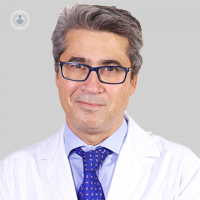Laser cataract operation
Written by:
& iquest;Because cataracts form
?
The eye has a convex lens behind the iris, which serves to focus the rays of light or an image on the retina. In youth it is transparent, but with age becomes more opaque, making vision blurry or hazy but then you talk about waterfall. The causes of cataracts can be multiple, the most common is age-related cataract in people of advanced age. Others are kind of traumatic, secondary to other diseases (diabetes, anterior uveitis, glaucoma) or drugs (corticosteroids, amiodarone.. )
& iquest, as their presence affects the view
?
The becomes blurred vision. Many changes occur previously graduation, beginning with loss of vision from afar and then close, making it increasingly more difficult reading. Double vision or multiple images in one eye. The patient complains of glare or light sensitivity. Difficulty in driving, especially at night. The colors become more muted and less intense.
It is necessary to treat cataracts
The u nico treatment of cataracts is surgical, when it begins to interfere with the patient's daily activities, such as reading or watching television. Initially the symptoms can be improved with a new refraction, best light or antireflective sunglasses. On the basis of the symptoms, you and your ophthalmologist should say when it's time to resort to surgery. It is true that Caratas“must be mature&rdquo ;, to be operated. Once you understand the benefits and risks of surgery, you must make an informed decision about the intervention.
In what is cataract surgery: what techniques exist:
In summary cataract surgery involves the removal of the opaque lens and replacement by a transparent methacrylate lens, that allow to focus the image on the retina. This may be monofocal ( need glasses for near or far ), or modern multifocal in that it dispenses glasses for all distances. Today we use two techniques primarily, a more traditional phaco or the facoemulificacion. In which the ophthalmologist makes small incisions in the glass of the eye ( cornea ), manually open the bag where the lens is housed ( capsulorhexis ) and by ultrasonic probe and aspires destroys the crystalline. In Oftalvist centers, we have the latest technology in cataract surgery, more accurate and secure: femtosecond laser. Both incisions capsulorrhexis, and destruction of the crystal is performed by a cold laser, and therefore is no longer dependent on the manual dexterity of the surgeon, improving accuracy and safety refractive procedure.



